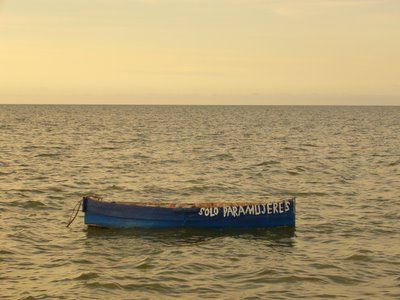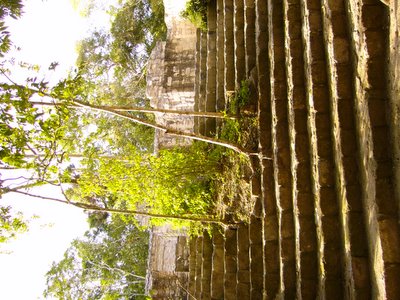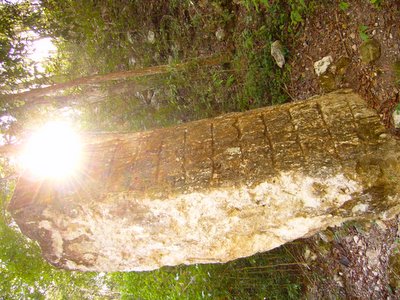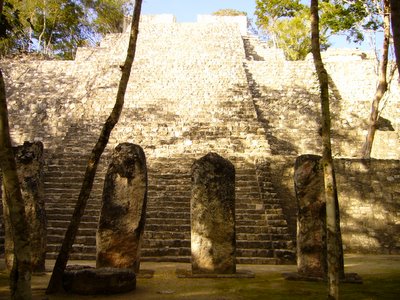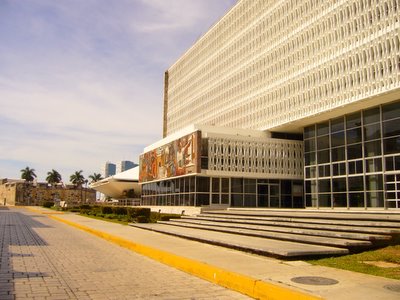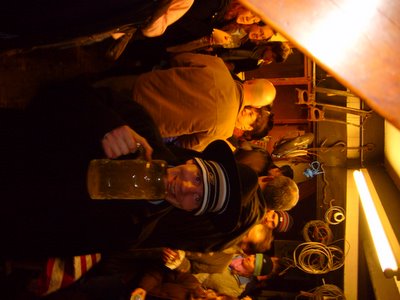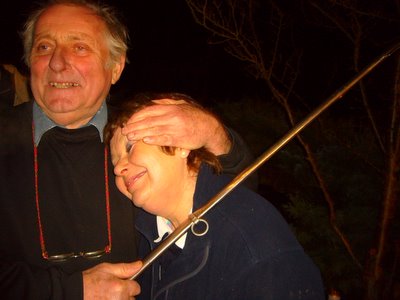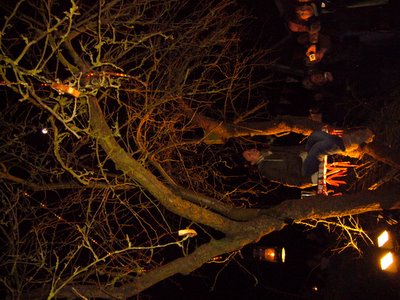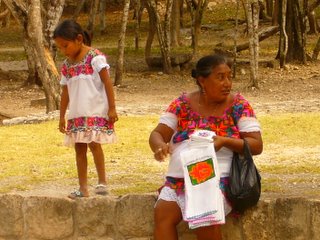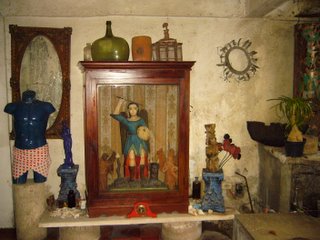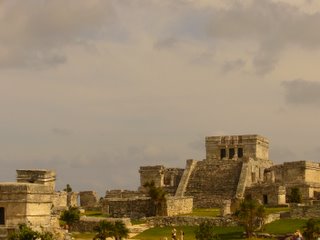After my attempts at putting pictures up on here, I had to go for a beer to restore my inner equilibrium and sense of well-being. I hate computers and they hate me. "Uploading" photos is also extremely slow and tedious, so I´m not sure how often I´ll do it. It´s probably just me being incredibly inept. Anyway, basta ya, enough of that.
I´ve been on a tour of a few more Mayan cities today, Uxmal in particular, which I think is the best yet. It´s one of the oldest-founded sites I´ve been to so far, dating from what they call the Classical Mayan period, and didn´t seem to have the same aura of sacrifice and death that I detected at Chichen Itza, which was founded much later.
Nobody knows why, but as time went on the Meso-American civilisations did get more blood-thirsty, culminating in the Aztecs who, seemingly, conquered their vast empire more-or-less as a by-product of their search for fresh supplies of victims.
I was picked up early from the hotel by a minibus driver who took some persuading that although my name wasn´t "Julia" I was still down for the tour. Also in the group were two elderly Australian ladies, a couple from Holland, some Spanish honeymooners and an ancient pair of Americans, with matching humps and hats.
As soon as they got on the bus they started whispering to each other, in the way that deaf people do, very loudly. "This is the pits!" says he, a glint of steel in his watery eyes. "We paid for a private tour, didn´t we?"
"Yes we did," said the wife. "I don´t wanna go round with THESE people. Do something. I wanna private tour."
Hearing them quite clearly, and having good English, the driver left them outside the tour office, which was shut and down an alleyway on the wrong side of town. I never saw them again that day, so who knows what happened to them.
On the way to the ruins we took a shortcut through a cemetery, which was strangely like a miniature version of the town, a vast grid of brightly-painted tombs and vaults covered in gaudy inscriptions. I noticed one family busily cleaning up their ancestral plot oblivious to a stray dog drinking out of their flower holder.
We also had a brief stop at a 17th Century hacienda, which was a hugely wealthy farm that employed hundreds of peasants. The owner´s house was an enormous neo-classical palace in the French style, and even the grain stores had baroque flourishes and statues on the roof. The guide pointed out a very plain building in the corner. "The workers were paid in company credits. They went there, to the store, to exchange for beans, or rice, or clothes, you know, whatever they need. But they always needed more and had to take loan. So when they were paid they never had enough to pay back and buy their beans or rice. Like with the banks and their bloody credit cards, the bastards." He said it as though he was hoping a new Pancho Villa of the computer age would rise up and give his bank manager a good kicking.
Uxmal supported an estimated population of some 25,000 and was at its peak between 750-1000AD, while we were stumbling about in the Dark Ages looking for the light. Because it´s in a very arid area and there are none of the natural wells called cenotes which abound on the peninsular, the rain god Chac-Mool was very important. His monstrous face with his long curved nose (like Gonzo from the Muppets) was everywhere.
It reminded me that on some Pacific islands our Queen is considered a bringer of rain, which seems a fair deal for the natives. All they need to give her is a shrimp cocktail and a gin and tonic, Chac-Mool demanded human hearts.
As I said, Uxmal was perhaps my favourite site so far. One building, the so-called Magician´s House, was particularly impressive. When you stand in front of it and clap your hands the returning echo sounds like a startled chicken. God knows how it works, but it´s a remarkably odd phenomenon.
The second site, Kabah, is thought to have been a garrison town linked to Uxmal. Ít was quite small and there wasn´t much to see, but the setting was lovely. Like many of the ancient cities it was abandoned for reasons that nobody fully understands. The best answer is that the Mayans themselves predicted their own destruction quite specifically, so perhaps when the dreaded day came they just gave up and wandered off.
This may be a good time to note that the Mayans had, and still have, a date for all of our doom - December 23, 2012. According to their predictive calendar (which, let´s not forget, foretold the arrival of Cortes and the Conquistadors to the very day) this is when the Earth, which was born on August 13, 3114BC, will come to an abrupt end. According to their horrendously complicated calendar that fateful day will be 13 Cycles, 0 Katuns, 0 Tuns, 0 Uinals and 0 Kins since the beginning of time - at least in this cycle, apparently there´s been many Earths before (all of which have been balanced on the back of a giant reptile floating on a pond). It´s interesting how the number 13 always crops up, wherever you are in the world. The Mayans also believed there were 13 levels of heaven (but only nine of hell, so that can´t be bad).
I hope nobody gets too worried about their impending doom - just think of the money you´ll save on Christmas presents.
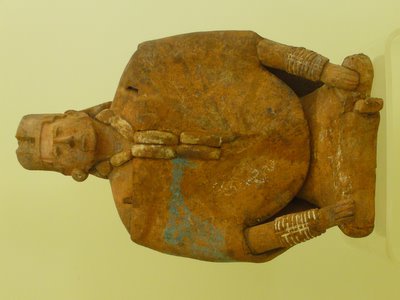

 I wouldn´t mess with this fella. Most of their depictions of poeple are very formulaic and cartoon-like (the creator of the Simpsons based his style on Meso-American art - the yellow colour is taken directly from their paintings) but sometimes they can be incredibly naturalistic, as below.
I wouldn´t mess with this fella. Most of their depictions of poeple are very formulaic and cartoon-like (the creator of the Simpsons based his style on Meso-American art - the yellow colour is taken directly from their paintings) but sometimes they can be incredibly naturalistic, as below. Why has every culture in the world arrived at exactly the same depiction of dragons? (it ain´t a crocodile, they did them quite accurately)
Why has every culture in the world arrived at exactly the same depiction of dragons? (it ain´t a crocodile, they did them quite accurately) This is a cast of the tomb of Pacal, a Mayan king of Palenque. It´s still there, but currently closed to visitors due to unseasonal flooding (I´m told), so I was lucky to see its replica here in Campeche. This is the image that excites the God-was-an-extraterrestrial theorists; they say it clearly shows a man operating a spaceship. That theory was blown out of the water when they deciphered the heiroglyphs that surrround the image. But you can still see their point.
This is a cast of the tomb of Pacal, a Mayan king of Palenque. It´s still there, but currently closed to visitors due to unseasonal flooding (I´m told), so I was lucky to see its replica here in Campeche. This is the image that excites the God-was-an-extraterrestrial theorists; they say it clearly shows a man operating a spaceship. That theory was blown out of the water when they deciphered the heiroglyphs that surrround the image. But you can still see their point.  This is a brilliant fat bloke. The way he´s grabbing his gut makes me think that the ancient Mayans did have a sense of humour after all.
This is a brilliant fat bloke. The way he´s grabbing his gut makes me think that the ancient Mayans did have a sense of humour after all. This is the roof of Fuerte de San Miguel, an old Spanish fort designed to ward off pirates and now home to el Museo de la Cultura Maya - a small-time sort of place, but home to some of the fantastic artifacts above.
This is the roof of Fuerte de San Miguel, an old Spanish fort designed to ward off pirates and now home to el Museo de la Cultura Maya - a small-time sort of place, but home to some of the fantastic artifacts above. This bloke seems to embody all that´s great about English comedy - he´s got Kenneth Williams´sneer and Old Man Steptoe´s leer, all at the same time.
This bloke seems to embody all that´s great about English comedy - he´s got Kenneth Williams´sneer and Old Man Steptoe´s leer, all at the same time. A former church in the town (Ex Temple de San José) is hosting a temporary display of jade funereal masks. In Spanish a mask is called a máscara - bit of etymology for you there (have I got that right, or am I accidently talking about the study of insects rather than words?) .
A former church in the town (Ex Temple de San José) is hosting a temporary display of jade funereal masks. In Spanish a mask is called a máscara - bit of etymology for you there (have I got that right, or am I accidently talking about the study of insects rather than words?) . Finally, I had to take these pictures. This poor fisherman was obviously lacking female company, so he christened his boat ´Solo Para Mujeres´- ´Only For Women´. And there it is; all lonely and blue floating in an empty ocean. The next fisherman was perhaps more forthright.
Finally, I had to take these pictures. This poor fisherman was obviously lacking female company, so he christened his boat ´Solo Para Mujeres´- ´Only For Women´. And there it is; all lonely and blue floating in an empty ocean. The next fisherman was perhaps more forthright.